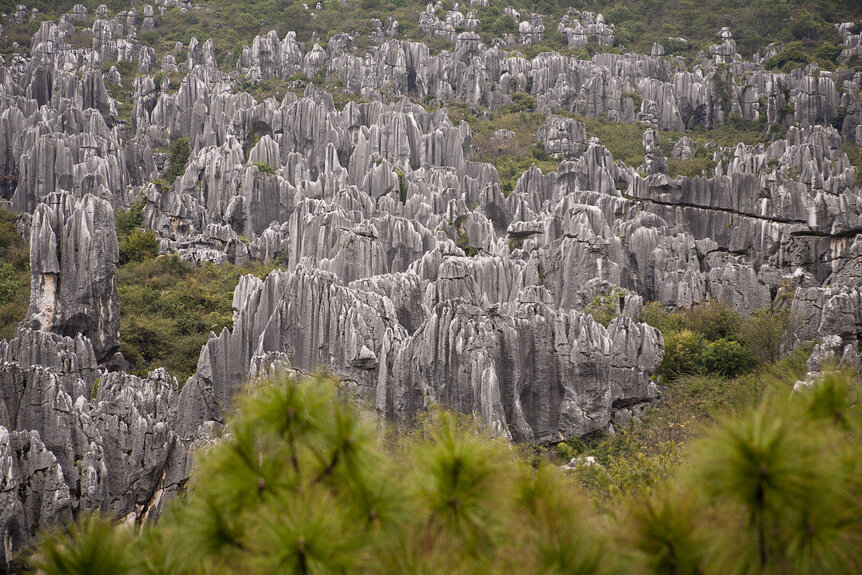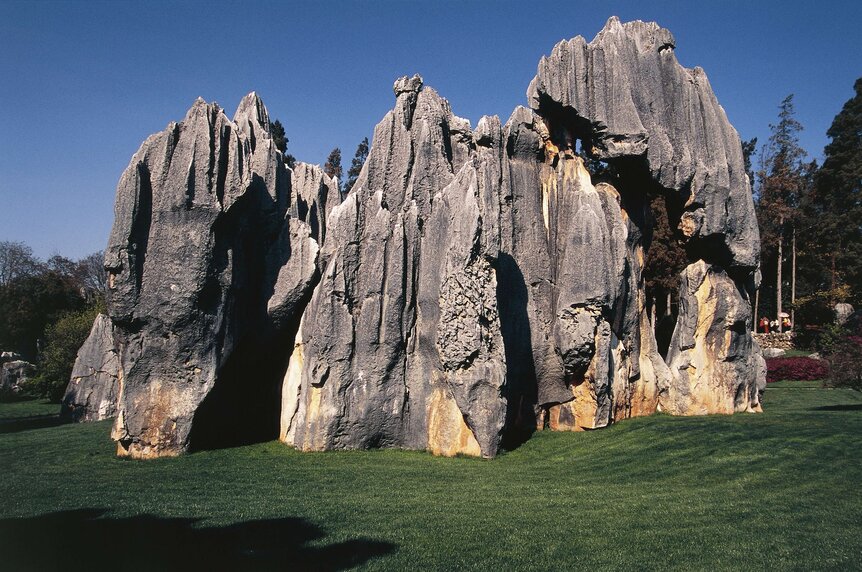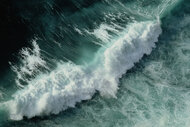Create a free profile to get unlimited access to exclusive videos, sweepstakes, and more!
Sweeeeet! Now we know how magical stone forests straight out of 'Candy Land' are formed

Candy Land sort of exists for real, except without King Kandy or Queen Frostine or that borderline nightmare fuel otherwise known as Gloppy. Think instead of sugary spires that could fit right in on the game board.
Giant lollipops and gingerbread houses might not abound in this world, but enchanting stone forests that appear as if they were sculpted out candy do. China’s enchanting Shilin Stone Forest and places like them seem as if they were created by magic. Now, NYU scientists Leif Ristroph and Michael Shelley have found out how karst (aka landscapes formed by the erosion of limestone and soluble rocks like it) become these fairytale shapes, and it is actually similar to how water erodes hard candy.
“We used lollipop candy in pure water as 'mock rock' that dissolves by the most standard route, which allowed us to write down all of the mathematics behind the process,” Ristroph, who co-authored a study recently published in PNAS, tells SYFY WIRE. “Of course, sugars also dissolve much faster than minerals, which allows us to observe in lab experiments all of the shape developments that are not at all visible in nature.”
Limestone and other soft minerals, such as gypsum and dolomite, in karst dissolve rather fast when exposed to flowing water — at least in geological terms, which makes a million years look like nothing. Because the scientists didn’t have a million years to wait around, they instead used computer simulations, led by Shelly, of karst erosion in action. These simulations started with simple shapes, much like the karst is imagined to have looked like before it slowly morphed into a fantasy world. They then accounted for the water flows and subsequent dissolution that formed them into sharp spikes just like those produced by the experiments.
“The simulations were not about reproducing specific formations, but showing that our model equations reproduced the single spires from simple initial shapes like those used in the experiments,” Shelley says, with Ristroph adding that “the fact that they match so well, even down to so many details of the shapes, gives us good confidence that we understand the whole process behind how sharp spikes form.”
For the dessert portion of Shelley and Ristroph’s study, blocks of porous candy were immersed in water to see if they could achieve results that looked like a stone forest. Model equations used math to show how water would dissolve this stone into sharp points over time. (No word on what flavor of candy were in those tanks of water, but at least in the video, they look like blue raspberry.) The duo were surprised that they didn’t even have to actually make water flow into and around the candy. The dissolving process itself actually triggered such flows. When the computer simulations were then compared to what happened in the experiments, they were a match.
“We think that this process is at work in nature because it involves such simple and common ingredients: a dissolvable solid immersed in water that is affected by the force of gravity. We found that dissolving naturally generates flows near the solid surface that carve it into a needle.”
Ristroph and Shelley’s experiments sped up the karst erosion process by at least 10,000 years. That is the approximate estimate of how long Ristroph believes it took for Shilin Stone Forest to initially form based on mineral dissolution rates. Because the structure is much older and the exact environmental factors that influenced it before humans even existed remain unknown, how much it actually took to form remains a mystery. It may even still be developing. Whether the spires will sharpen or be eroded away remains to be seen.
“There is a lot of uncertainty since the rates depend on many unknown factors in the environment, all of which are likely changing in time as well. A big unknown is also how much development happens underground and how much happens when exposed at the surface.”
This process could eventually inspire a new method of manufacturing ultra-sharp instruments. It is possible that glass or metal immersed in acid or another chemical would produce extremely fine points, and another plus is that the original shape of the material would not really matter because it would end up forming a spike anyway. Applications for such instruments could be widespread.
“Scientists use micro-pipettes to inject into the cell nucleus or sharp needles to scan molecular surfaces. Also, from our ‘candy forest’ experiments, we know how to make many needles in parallel, which could be very useful.”
Now that’s sweet.

















